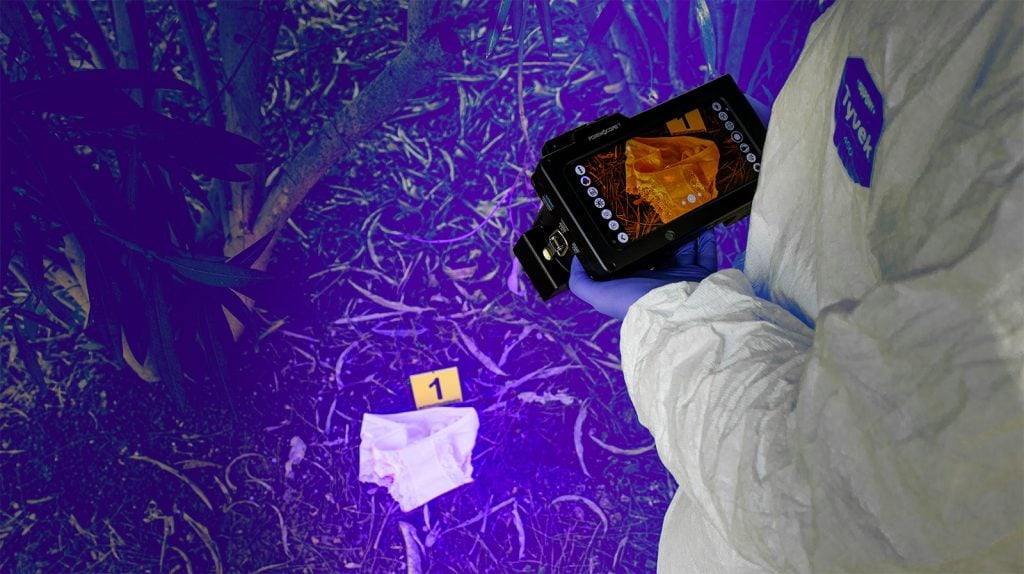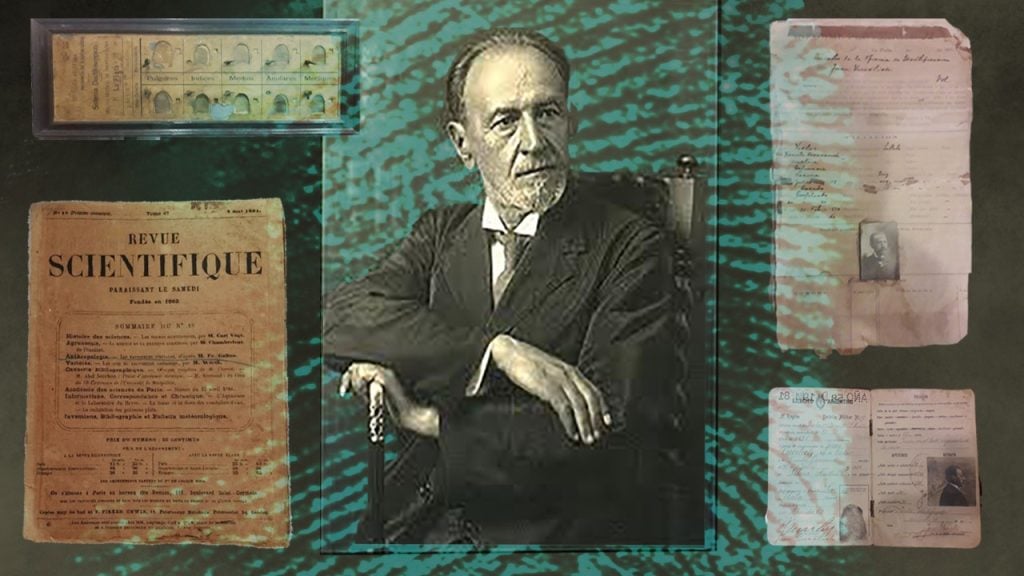
Fingerprint Evidence

We are distinguished from primates and other mammals by many features and one of these features are our hands and how we use them, their place in our history, and their place in how we interact with our surroundings, we touch objects around us every day, keyboards of our computers, cups, glasses, door handles, the door of the fridge that we open every night when we visit the kitchen. Every time we touch something, we leave a trace behind us, this trace is a signature that is specific for every individual, it is our “fingerprints”.
Every human being has different fingerprints even identical twins who share identical DNA has different fingerprints, the unique nature of fingerprints allow us to use them in many areas from biometric security, to unlock our phones, unlock our houses, mass disaster identifications, background checks, john doe or jane doe identifications, criminal record tracking and as you can guess they are a very crucial part in criminal investigations. Fingerprint analysis existed for more than a hundred years and it still remains an extremely useful tool for law enforcement agencies and forensic scientists and the advancement of technology makes it better to use each and every day.
Fingerprints can be used in;
- Biometric Security (To unlock doors, Computers, Phones, Secure systems and Areas)
- Victim identification (Disaster victims, Unknown deceased, Missing people)
- Background checks (Government applications, Security clearance, Weapon permits)
- Homicide Cases (The perpetrator fingerprints can be on a murder weapon or in the environment of the scene or on the victim’s body)
- Robbery Cases (The perpetrators fingerprints can be found on banknotes)
- Assault cases (The perpetrator may have left fingerprints on the victim’s skin)

The first Fingerprint/Handprint analysis discoveries date back to Qin Dynasty (221-206 BC) records, the records include details about using handprints as evidence in burglary investigations, clay seals with friction ridge impressions were used both by Qin Dynasty and Han Dynasty. In a 14th century Persian book, “Jaamehol-Tawarikh”, comments on the practice of identifying people from their fingerprints can be found, but until the late 19th century the fingerprint analysis was not used efficiently, the use of fingerprint evidence can also be found in a book of Mark Twain, “Life on the Mississippi” and it was written on 1883. Alphonse Bertillon, the father of forensic photography, primarily used anthropometry as an identification method but later on started using fingerprint evidences as well, but until 1888 with the discovery of Galton Patterns found by Sir Francis Galton the fingerprints were not used efficiently.



In 1891, Juan Vucetich, an Argentinean Police Official began the first fingerprint files based on Galton pattern types and included these in the Bertillon system.


In Buenos Aires, Argentina, 1892, Police inspector Eduardo Alvarez made the first criminal identification using fingerprints. Alvarez was able to identify a woman who killed her sons and then cut her own throat to place the blame on another person. Her bloody fingerprint was left on a doorpost, proving her identity. And the great history of Fingerprint analysis started with this case, leading to new discoveries and new methods in detecting, identifying, and evaluating fingerprints. The history of Fingerprint analysis and preservation started in the 200s BC with clay molds in Qin Dynasty and right now we have the largest digital fingerprint database named as AADHAAR project in India.
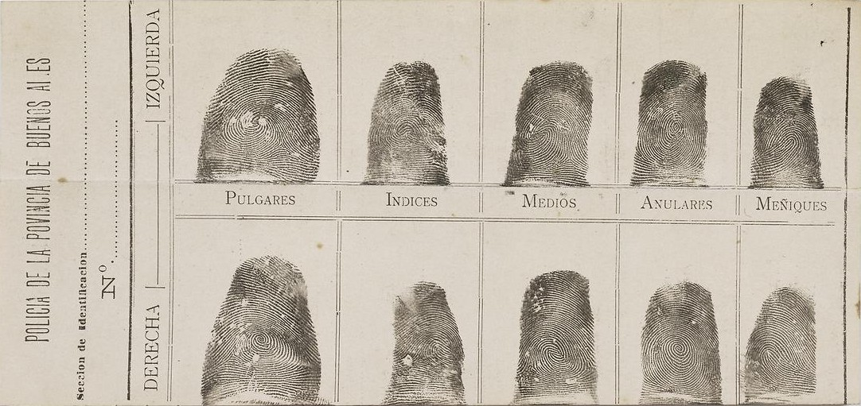
Fingerprints are unique patterns formed by ridges and furrows that are on the pads of fingers, palms, toes, and feet, however, the prints from palms, toes, and feet are used less often for identification purposes. The fingerprint pattern we get when a finger is pressed on a surface is the friction ridges on that particular finger, there are three different types of ridge patterns, Loops, Whorls, and Arches.


Loops
These prints from a loop shape that curves back on themselves, are divided into radial loops (pointing to the thumb) and ulnar loops (pointing to the pinky) and it is the most common type of pattern, accounting for approximately 60 percent of all patterns types.
Whorls
These prints for a spiral pattern like a whirlpool or a snail’s shell, four different groups of Whorls exist, Plain (Concentric circles) Central Pocket Loop (Loop with a whorl at its end), Double Loop (Two loops creating an S-shaped pattern), Accidental Loop (Irregularly shaped Whorls) this pattern accounts around 35 percent of the fingerprint patterns.
Arches
These prints have a wave-like pattern with plain and tented arches, the tented arches are above the plain arches and have a sharper point than plain arches. Each Fingerprint is unique (no two people have been found to share the same fingerprints this includes identical twins) and persistent and by persistence we mean permanence whatever happens to a person’s fingers however a person grows, their fingerprint will never change unless there is a very deep scar which still makes that person’s fingerprint unique on its own.
The general pattern types we mentioned (Loops, Whorls, and Arches) are used for initial inspection only but the real proof or so to say, the real evaluation is done by the “Minutiae”, the fingerprint analyst will choose the fingerprints with correct pattern types (matching pattern types) and compare these fingerprints in a side by side fashion, with enough correlating details the fingerprints are determined that they are a match.
Forensic scientists never destroy the collected evidences from cold cases, the collected fingerprints are secured in a database, as you guessed until now, fingerprints can be used in unsolved crimes and cold cases when there is a reason to compare them, fingerprints from an unsolved crime can turn up as a match during a routine database search and sometimes these unknown prints can link multiple crimes together.
How do we detect, find and collect fingerprints?
Until now the history and use of fingerprints were mentioned, now we have come to the most intriguing part of Fingerprints, detection and collection of fingerprints and advancement of technology have delivered us incredible means on detecting fingerprints.
There are two main types of fingerprints at a crime scene, Patent (Visible) and Latent (invisible) fingerprints the Patent fingerprints are the ones that are on soft surfaces such as wax, paint, blood, ink, caulk, soap, dirt, mud and etc. Patent fingerprints are collected with a very straightforward method: Photography. On the other hand, Latent fingerprints can be found on a very wide variety of surfaces such as glossy, smooth, matte, rough, porous, and non-porous surfaces. Latent prints are formed when the body’s own secretions are deposited on other surfaces and they can be found easily with the “right method” as, by the right method, I’m not only talking about fingerprint powders or chemical methods because with the advancement of technology and forensic science we can now obtain DNA from some of these latent fingerprint evidences.
One of the most common methods for detection and collection of latent fingerprints was dusting the surface with a specialized fingerprint powder, photographing it, and lifting it up with an adhesive tape to apply on a lift card to preserve it. This may sound like a good method but fingerprint powders can easily contaminate the evidence and completely ruin further investigations, there are certain chemical methods like using cyano-acrylate (super glue) but it can also destroy important evidences.
Usage of alternate light sources is becoming more and more common for investigations and with the right equipment with correct wavelength values and correct wavelength spectrum detection of fingerprints is becoming easier and easier. The ease of use, small form factor, and the quality of both lighting and imaging equipment are essential for a proper fingerprint investigation. If the light source and filter system you are using needs constant physical replacement and it is huge and you need to carry it to the crime scene with luggage, it won’t be as useful as you can think and it will cause unnecessary distraction in the crime scene, rendering the investigation rather difficult. If the camera you are using is not specialized enough for multispectral photography or if it’s not high resolution and if it doesn’t capture images in *RAW format the collected evidences can become useless in the case. Of course, the objects that might have the fingerprints can be transported to the laboratory but this will just destroy valuable evidences. There is a small form factor, easy to use devices with the best lighting and imaging capabilities in the market such as ForenScope Forensic Multispectral Tablet, ForenScope Contactless Fingerprint, ForenScope 4K Mobile.

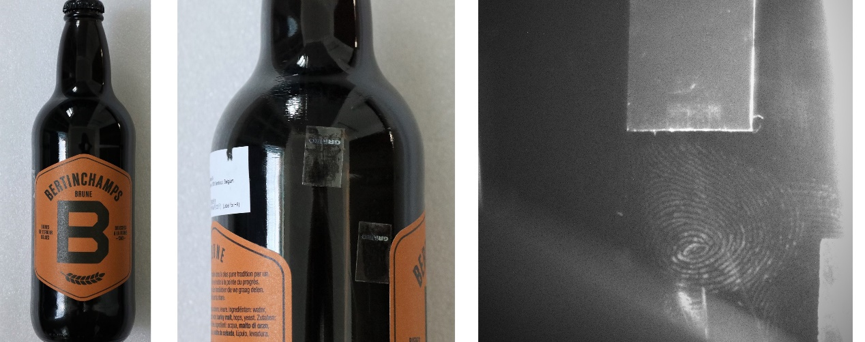


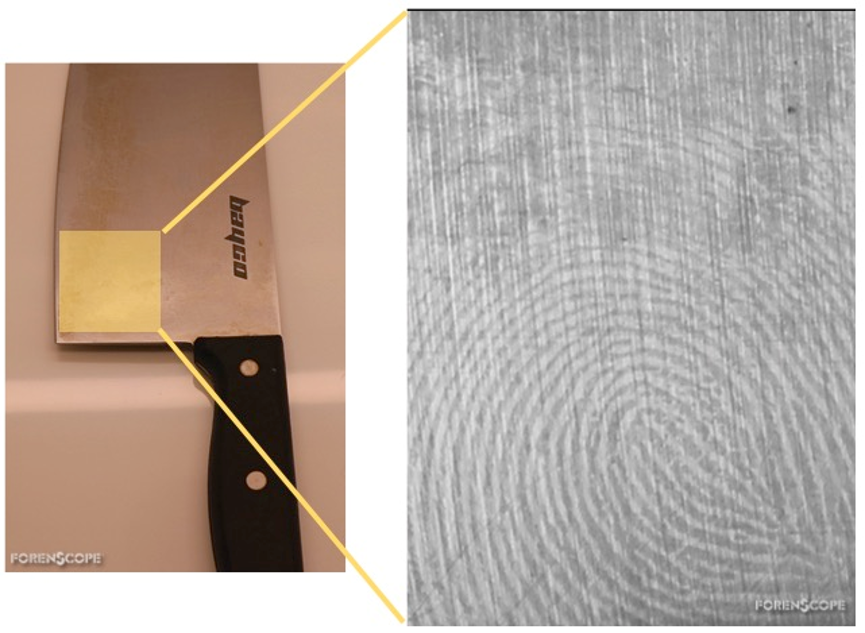
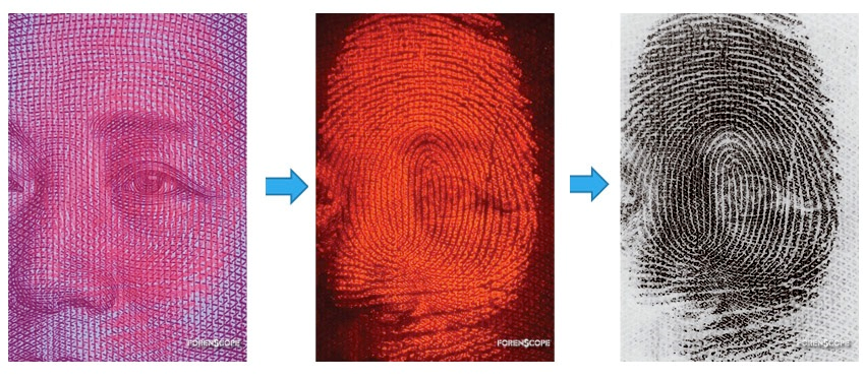
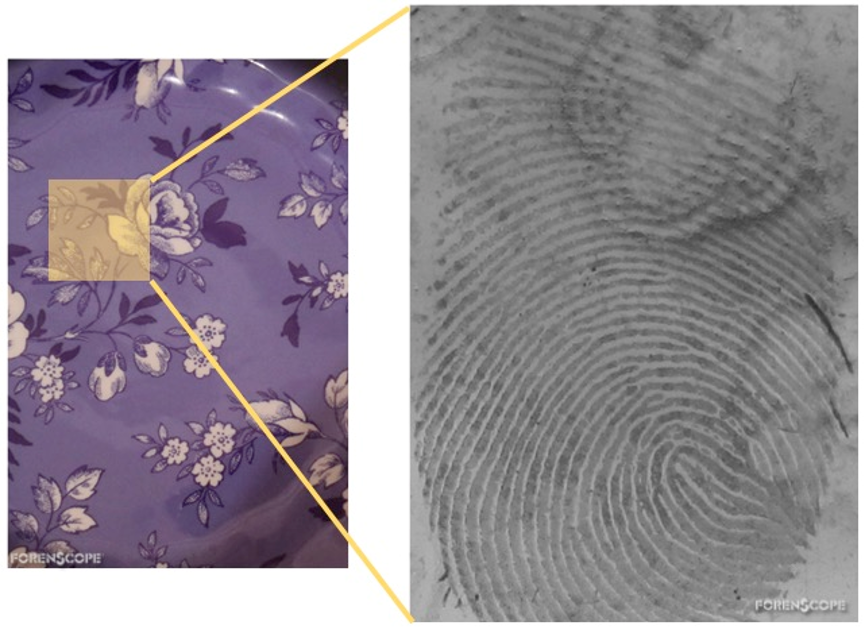
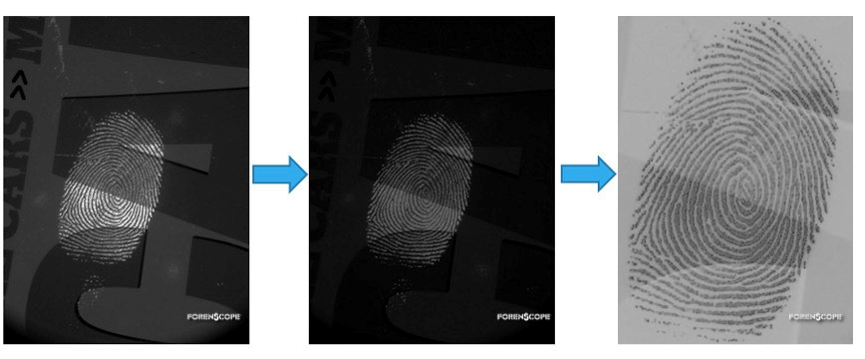


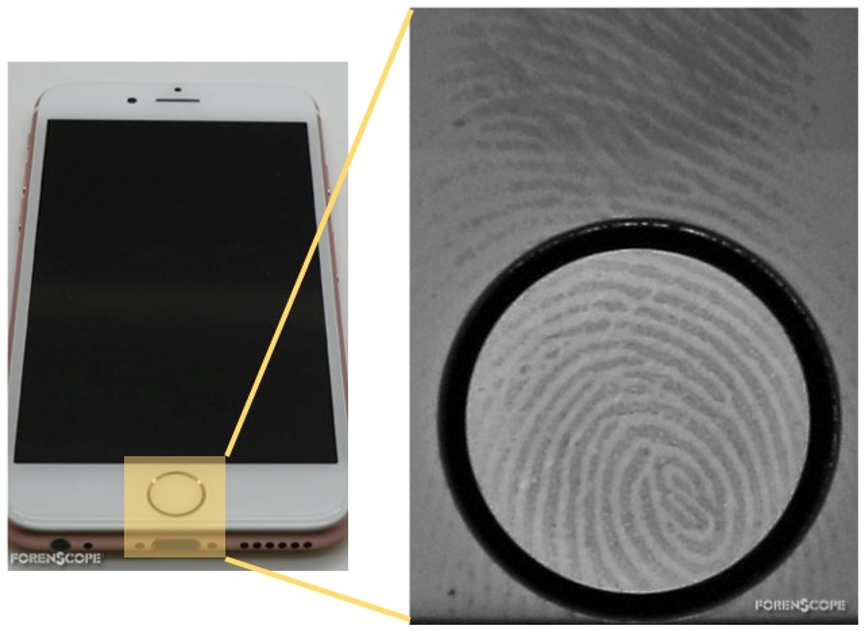
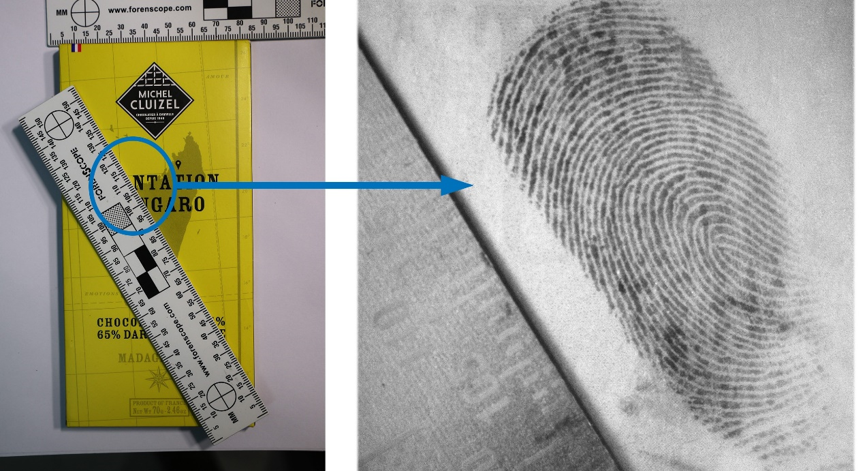
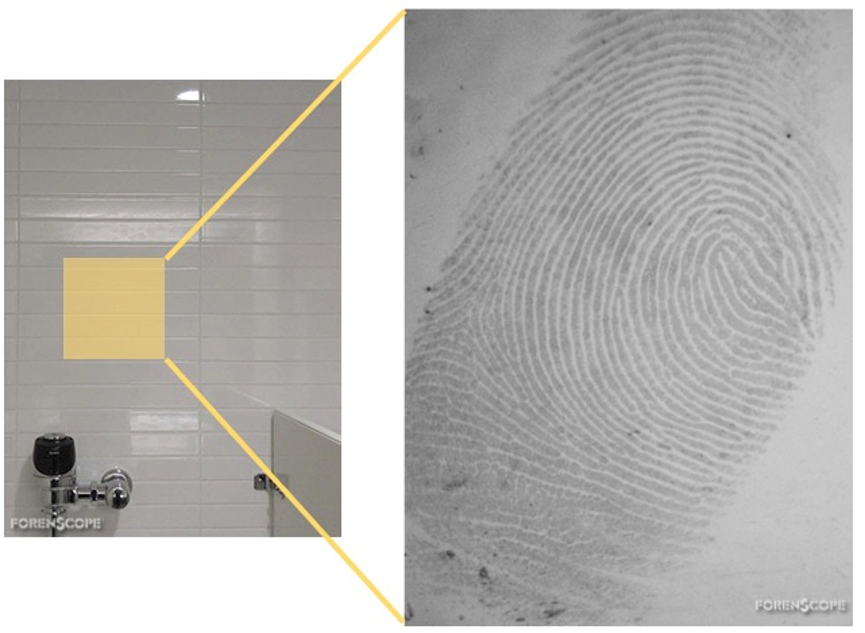
Chemical developers can be used on porous surfaces, one of these chemicals is Ninhydrin. Ninhydrin causes fingerprints to become purple color ad renders them visible to the naked eye but destroys the DNA evidence and some trace evidence such as inks and writings in the process. The chemical developing methods are like the fingerprint powder, they reduce the investigator’s capability to perform other techniques to reveal more evidences and information in the crime scene that’s why all non-destructive investigations are performed before the use of chemicals.
The Analysis process starts after the detection and collection of fingerprint evidences, the analysis process is called ACE-V (Analysis, Comparison, Evaluation and Verification), a four-step process to reach a determination on each fingerprint.


